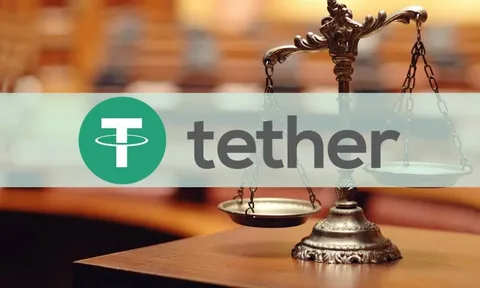Introduction
Tether (USDT) has long been a cornerstone of the cryptocurrency market, acting as a stablecoin that maintains a 1:1 peg with the US dollar. It provides liquidity, stability, and a bridge between traditional finance and the often volatile world of cryptocurrencies.
In Q3 of this year, Tether experienced an unprecedented surge in adoption, welcoming 36 million new users. This massive influx highlights the growing importance of stablecoins in global financial ecosystems. In this deep dive, we will explore the reasons behind this surge, the global on-chain adoption trends, and what this means for Tether, USDT, and the broader crypto landscape.
The adoption of Tether’s USDT is not just a matter of new users signing up for wallets or exchanges. It represents a deeper, systemic shift in how digital currencies are being used, particularly in regions where traditional financial systems are less accessible or less reliable.
With its wide acceptance, Tether is fast becoming the stable currency of choice in markets ranging from Asia to Latin America. This post will break down the driving forces behind this trend and analyze the impact on global financial systems.

1. The Rise of Stablecoins and Tether’s Role
Stablecoins have become an integral part of the cryptocurrency ecosystem, and Tether remains at the forefront. USDT’s success can largely be attributed to its stability in a volatile market and its liquidity. The need for a stable digital asset has grown exponentially as both retail and institutional investors seek shelter from the price swings inherent in cryptocurrencies like Bitcoin or Ethereum.
Tether has distinguished itself by offering a secure and trusted store of value. Its transparency regarding reserves has been a key factor in maintaining trust among its users. Over the years, Tether has grown its market cap to over $80 billion, with USDT becoming the dominant stablecoin in the market. This widespread usage has paved the way for the recent surge of 36 million new users in Q3, making it one of the most widely adopted cryptocurrencies globally.
Global On-Chain Adoption Trends
The rise in adoption is not confined to any single region. The 36 million new users come from diverse geographic areas, with emerging markets showing significant traction. Regions where access to traditional banking services is limited or unstable have embraced USDT as a viable alternative. Countries experiencing hyperinflation or economic instability, such as Venezuela and Argentina, have witnessed Tether becoming a lifeline for citizens looking to protect their wealth.
Another key trend is the increased usage of USDT in decentralized finance (DeFi). With the DeFi ecosystem continuing to expand, stablecoins like Tether are playing a vital role in liquidity pools, lending, and yield farming. The demand for a stable, universally accepted digital asset in these ecosystems is driving the adoption of Tether’s USDT even further, ensuring its relevance in a rapidly evolving financial landscape.
2. Why 36 Million New Users in Q3?
The influx of 36 million new users during Q3 marks a significant milestone for Tether. But why now? Several factors contribute to this growth.
2.1 Global Economic Uncertainty
One of the primary drivers of USDT’s adoption surge is global economic uncertainty. With rising inflation, geopolitical tensions, and fluctuating fiat currencies, more individuals and businesses are turning to stablecoins like USDT as a hedge against these risks. As a stable currency pegged to the US dollar, USDT offers users a way to maintain purchasing power without the volatility associated with other digital assets.
2.2 Institutional Adoption
Tether’s USDT is not just for retail investors. The growing adoption among institutional investors has also played a significant role in the increase of new users. Hedge funds, corporations, and even central banks in some regions are starting to recognize the benefits of using stablecoins for cross-border payments, remittances, and hedging. Tether has capitalized on this demand by forming strategic partnerships and increasing its presence in financial hubs across the globe.
2.3 The DeFi Boom
DeFi platforms have grown rapidly in recent years, and stablecoins are a vital component of these ecosystems. As DeFi adoption grows, so does the need for stablecoins like USDT, which provide liquidity and stability in various DeFi protocols. In particular, yield farming and lending platforms have seen a surge in USDT deposits, further driving the global adoption of Tether.
3. Regional Breakdown: Where Tether is Thriving
3.1 Latin America
Latin America, particularly Argentina and Venezuela, has seen a significant rise in USDT adoption. Economic instability and hyperinflation have led citizens to seek alternatives to their local currencies, which are rapidly losing value. USDT offers a stable store of value that can be easily accessed through mobile wallets and exchanges. In many cases, Tether is being used for daily transactions, remittances, and even savings, as it provides a more reliable alternative to national currencies.
3.2 Asia
Asia has always been a hotbed for cryptocurrency adoption, and Tether’s USDT is no exception. Countries like China, Singapore, and South Korea are leading the charge in terms of both retail and institutional adoption. In China, despite the government’s crackdown on cryptocurrencies, USDT remains a popular choice for cross-border payments and remittances. Singapore has emerged as a key financial hub for stablecoins, with its favorable regulatory environment attracting both crypto startups and institutional investors.
3.3 Africa
Africa is another region where USDT adoption is on the rise. The lack of access to traditional banking services in many African countries has made cryptocurrencies an attractive alternative. In countries like Nigeria, where the local currency is experiencing significant devaluation, Tether provides a safe haven for preserving wealth. Additionally, the rise of mobile money services in Africa has made it easier for users to access USDT, further driving adoption.
4. The Future of Tether and USDT in Global Finance
As we look ahead, the future of Tether and USDT appears bright. The stablecoin’s ability to provide a reliable store of value, coupled with its growing global adoption, positions it as a key player in the future of global finance.
4.1 Regulatory Challenges
However, Tether’s rise is not without its challenges. Regulatory scrutiny around stablecoins has been increasing, particularly in the United States and Europe. Governments are concerned about the potential risks associated with stablecoins, including their impact on monetary policy and financial stability. Tether has taken steps to address these concerns by improving transparency around its reserves and working with regulators to ensure compliance.
4.2 Expansion into New Markets
Tether is also looking to expand into new markets. The recent surge in adoption in regions like Latin America and Africa is just the beginning. As more countries face economic instability and inflation, the demand for stablecoins like USDT is likely to increase. Additionally, Tether is exploring opportunities in the burgeoning central bank digital currency (CBDC) space, where its expertise in stablecoins could prove invaluable.
4.3 Innovation in DeFi and Beyond
As the DeFi space continues to evolve, so too will the role of stablecoins. Tether is well-positioned to remain a key player in DeFi, providing liquidity and stability to a wide range of protocols. Moreover, Tether is exploring innovations beyond DeFi, including tokenized assets and real-world use cases for stablecoins. This continued innovation will ensure that Tether remains at the forefront of the stablecoin market.
Conclusion
The influx of 36 million new users in Q3 highlights the growing importance of Tether’s USDT in the global financial landscape. From providing a safe haven in regions with economic instability to powering the rapidly expanding DeFi ecosystem, Tether’s role as a stable and trusted asset is undeniable. While challenges remain, particularly around regulatory scrutiny, Tether’s commitment to transparency and innovation positions it for continued success in the years to come.
As global adoption trends continue to evolve, Tether and USDT will play a crucial role in shaping the future of finance. Whether you’re an individual looking for a stable digital asset or an institution seeking to streamline cross-border transactions, Tether’s USDT offers a reliable solution.
What do you think about the rise of Tether’s USDT? Do you see stablecoins playing a larger role in the global financial system? Let us know your thoughts in the comments below!






